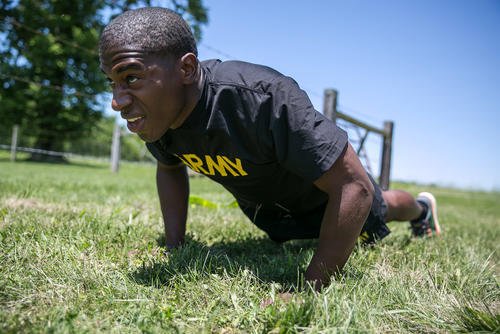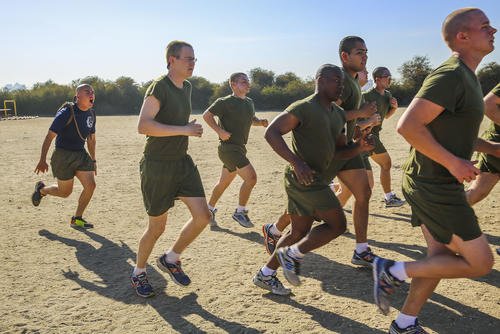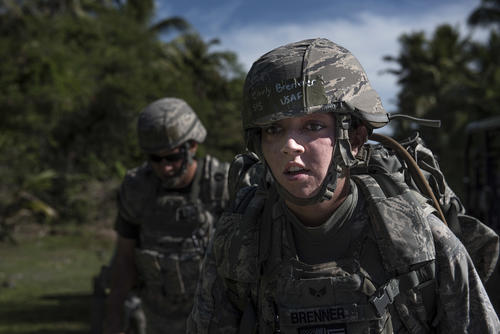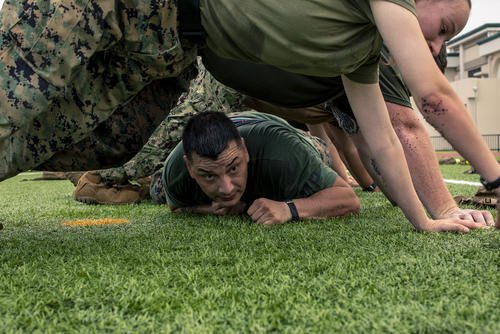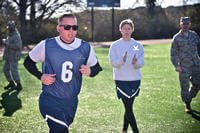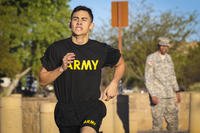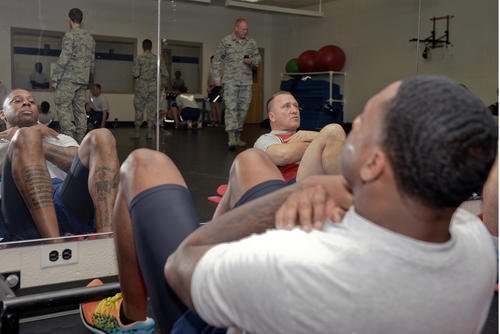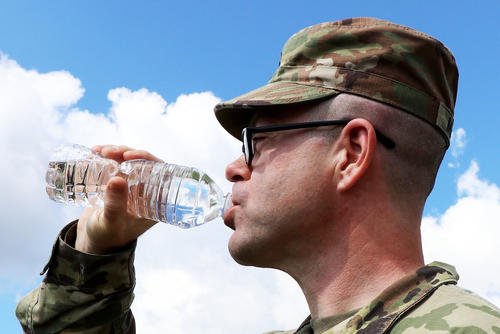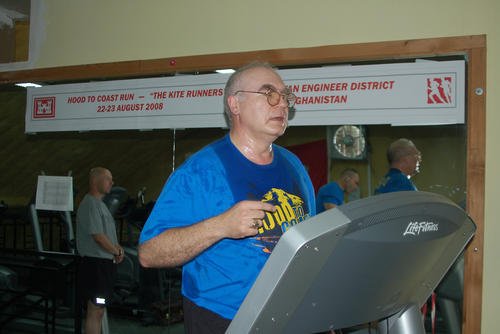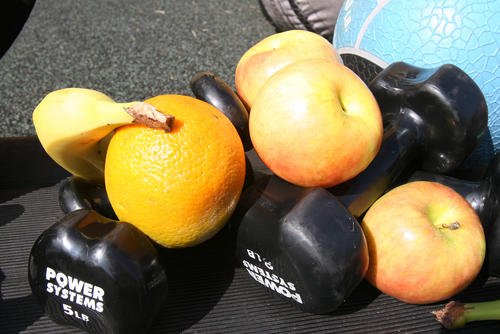If you are looking to shave seconds (or even minutes) off your run times, you might think the answer is simply to run more miles per week or push harder on your goal-paced intervals.
However, as anyone who has prepared for a tactical career knows, real performance gains come from a smarter, more holistic approach. As a tactical fitness coach, I’ve seen repeatedly that integrating strength training is a game-changer for anyone chasing faster run times, especially those with no prior experience in lifting weights.
This holds true whether you are prepping for a physical fitness test, a marathon or just trying to crush your personal best in sprinting.
Here is a question from a future soldier:
Stew,
How does strength training help improve run times, and where do you program it?
Thanks,
Daniel
Some prefer to lift before a run, which is fine for longer-distance cooldowns. However, if you are working on adding speed and improving pace, you may want to consider running first, followed by lifting.
Alternatively, you can have running seasons or cycles – followed by lifting cycles with less running – to truly focus on strength and power, instead of trying to balance the two simultaneously. Think of it like an “offseason” lift program, then enter the next run cycle stronger and ready to progress into higher miles and faster paces each week.
Read Next: What Air Force Bomb Techs Should Know About Their New Fitness Test
Here are the benefits of adding weights and calisthenics alongside running:
Improved Muscular Endurance
Tactical athletes need strong lungs and legs. Strength training will help your legs power through load-bearing activities, like running on hills or sand, and those that require endurance over long distances on varied terrain. Strength training builds durability in your lower body, core and even upper body, allowing you to maintain your form when others break down.
Increased Power and Stride Efficiency
When combined with calisthenics and plyometrics, explosive lifts develop speed, power and excellent hip and leg mobility. That translates to a stronger push-off and longer stride. Teaching the body how to generate power through lifting, sprinting and jumping (whether with weights or calisthenics) is most effective with a structured plan built around strength and power phases in training.
Injury Prevention
For the tactical athlete, the repetitive nature of running can lead to overuse injuries, especially if you are not a seasoned runner. Strength training balances muscle groups, strengthens weak links and fortifies joints, making runners more resilient.
Where Does Strength Training Fit into a Running Program?
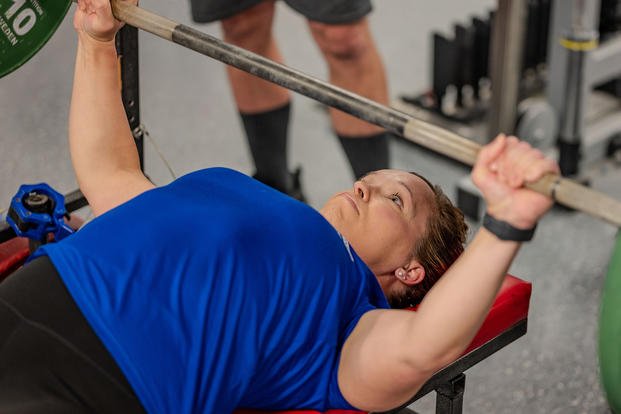
The periodization method involves dividing your fitness training into distinct cycles in which the goals and exercises can be varied to achieve better results and avoid overuse injuries.
For example, one cycle could focus on running endurance, then the next one could involve decreasing the mileage and concentrating on strength and power. These cycles can last four to eight weeks each.
Repeat this throughout the year a few times, and you can create maintenance programming so you can do both together and see the results below:
Do 2 Strength Sessions Per Week
For most tactical athletes or those preparing for selection, two or three full-body strength workouts per week are the sweet spot. Alternatively, you could do two upper-body and two lower-body training days, followed by running workouts.
High-Low Intensity Days
Pair strength work with your easy run days or do it on days you’re not running at all. This allows for difficult run workouts (intervals, tempo runs, long runs) while both the lifting and running receive the recovery they require.
Here’s what a balanced week could look like:
- Monday: Interval run and upper-body/grip strength
- Tuesday: Lower-body strength and run or bike, then stretch
- Wednesday: Easy run or ruck and mobility (or nonimpact cardio)
- Thursday: Tempo run and core strength
- Friday: Total-body strength
- Saturday: Long run or ruck
- Sunday: Rest or active recovery (mobility, stretching)
The key is to avoid doing heavy lower-body lifts right before your hardest speed run or long run days. Allow your legs to recover so you can participate in high quality running sessions at full capacity.
Periodization Model with Exercise Selection
Focus on compound, functional movements, such as squats, lunges, deadlifts, step-ups, push-ups, pull-ups and planks. Tactical athletes also benefit from loaded carries, sandbag work and explosive plyometrics. Don’t forget grip work (farmer’s carries, dead hangs) for tactical readiness that requires grip (equipment carry, stretcher or personnel carry).
Adjust your emphasis on strength, based on your running goals and testing calendar, by using periodization training:
- Offseason: Build muscle and strength by lifting heavier weights with fewer reps. Make strength training your primary goal and running more of a de-load maintenance phase.
- Preseason: Transition to power and speed – lighter weights, higher reps, more explosiveness. Start increasing your weekly running mileage and speed.
- In-season: Maintain strength with one or two sessions per week, focusing on injury prevention but making running the primary goal.
If your goal is to run faster – whether that’s for a selection test, a race or mission readiness – strength training isn’t optional. Strength is foundational. Not only will you become more powerful and efficient, but you’ll also build the resilience needed for the demands of tactical life. However, if you are already strong and powerful, your primary goal should be endurance.
The bottom line: Don’t just run to get better at running. Build a body that’s as strong as it is fast, and you’ll unlock new levels of performance you never thought possible.
Check out more articles in the Military.com Fitness Section on running, rucking progressions, fitness testing, and strength and endurance training for the tactical athlete that will help you understand the methods of preparing for tactical professions.
Want to Learn More About Military Life?
Whether you're thinking of joining the military, looking for fitness and basic training tips, or keeping up with military life and benefits, Military.com has you covered. Subscribe to Military.com to have military news, updates and resources delivered directly to your inbox.







